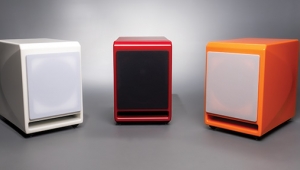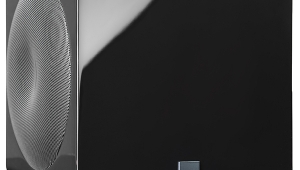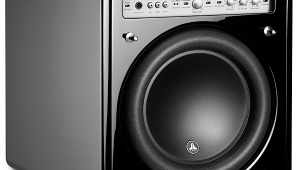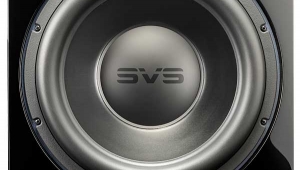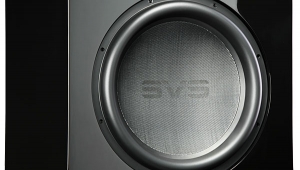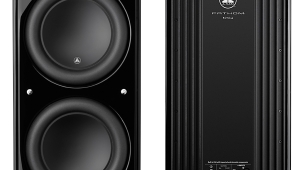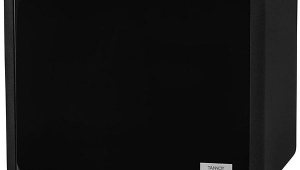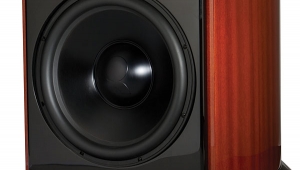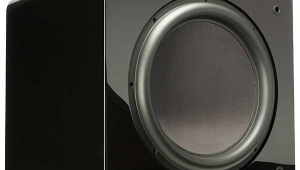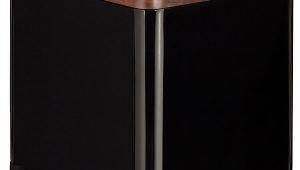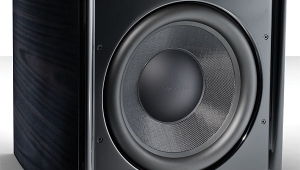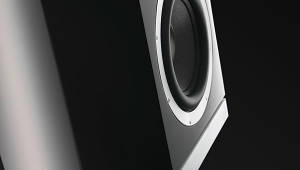| Columns Retired Columns & Blogs |
Paradigm Reference Servo-15 powered subwoofer Page 3
The good news is that the Servo-15, when teamed up with excellent dynamic monopole speakers such as the Dynaudio Contour 3.0 and the B&W Nautilus 805, had outstanding tonal accuracy, great timbre, and clear, deep bass pitch. With these speakers, the Servo-15 was a champion at resolving bass detail and instrumental color. Drum-head timbre was evident in the bass-drum strokes that open La Fiesta Mexicana: Prelude and Aztec Dance, from Fiesta (Reference Recordings RR-38CD). Pitch changes in Joel Goodman's very deep synthesizer chords on "Silk Road," from Of the Marsh and the Moon (Chesky WO144), were clear and decisive. Glen Moore's double-bass notes on "The Silence of a Candle," from Oregon's Beyond Words (Chesky JD130), were ultra-clean and well damped, with distinct tonal steps. Bass lines were instantly resolvable, with precise pitch definition and articulation.
Th X-30's volume controls could be adjusted with each CD to coax the best performance from the Servo-15. Listening to David Hudson's didgeridoo on "Rainforest Wonder" (Didgeridoo Spirit, Indigenous Australia IA2003 D), for example, I had to crank the X-30's bass level way up to achieve the same deep, raspy, throbbing sound that I heard with the Revel Ultima Salon. On other CDs, I preferred the Contour 3.0, B&W Nautilus 805, or Revel Salon driven full-range without a subwoofer.
The Servo-15 was particularly good in the reproduction of sustained, solid bass, such as pipe-organ pedal notes. Deep chords were played with clarity, power, and excellent pitch definition. There was no sign of strain, overload, or clipping. The B&W 805/Servo-15 combination produced a bass "lock" on my listening room when organist Jean Guillou held a deep pedal note, playing Mussorsky's "Gnomus," causing the room to shake. The Servo-15 reproduced the 32' pipes of the Great Kleuker-Seinmeyer Organ of the Zürich Tonhalle with sustained power, vibrating the room, but did not interfere with the instrument's flute and trumpet ranks. It also reproduced rumbling organ-pedal notes when I played César Franck's Pièce Héroïque on the Marcel Dupré Recital CD (Mercury Living Presence 434 311-2). Even more interesting were the sounds of the church pipe organ on Elgar's The Dream of Gerontius, Part 1 on Stereophile's Test CD 2 (STPH004-2). The B&W 805 Nautilus/Servo-15 combo provided the "sense of space," and clearly enunciated the final solid organ-pedal chords that "underpin the work's tonal foundations," as described in JA's liner notes.
The Servo-15's deep-bass extension and pitch definition was best heard on sustained deep bass synthesizer notes when combined with dynamic satellite speakers. The subterranean synthesizer chords that open Emmylou Harris' "Deeper Wells" (Spyboy, EM-25001-2) enveloped and forcefully rolled over me, and the ultra-deep but slightly airy synthesizer representing the ghosts in the opening selection of the Casper soundtrack CD (MCA-11240) was captured perfectly. Similarly, the Servo-15 gave just the right weight to the distant and ethereal synthesizer bass that backs up "Silk Road" for the soft, rainy acoustic landscape the track depicts.
Conclusion
The Paradigm Servo-15 subwoofer system is recommended for medium to small listening environments and dynamic main speakers. For such applications, its $1500 price makes it an excellent value in a compact, 75-lb subwoofer. It offers servo-correction, low distortion, ultra-clean deep-bass output, and outstanding tonal accuracy. Its X-30 control module gives the Servo-15 the flexibility necessary to integrate with different types of monopole dynamic loudspeakers. With enough cable, the X-30 can be adjusted from your listening chair, allowing low-pass filter and bass-level adjustments on the fly.
But those interested in auditioning the Servo-15 should first try it with high-quality dynamic main/satellite speakers before using it with dipole panel speakers like the Quads. Despite the Servo-15's superb engineering and excellent pitch definition, its comparative lack of bass slam, inability to expand the Quad's dynamic range, and lack of quick bass transient performance in my large listening room were disappointing. No matter how many of the X-30's control settings I tried, I couldn't get more sock out of the Servo-15/Quad ESL-63 combo. This experience hasn't helped my love/hate fascination with the Quad ESL-63, but it sure increased my understanding of Durkheim's anomie—and of the Paradigm Servo-15.
- Log in or register to post comments
